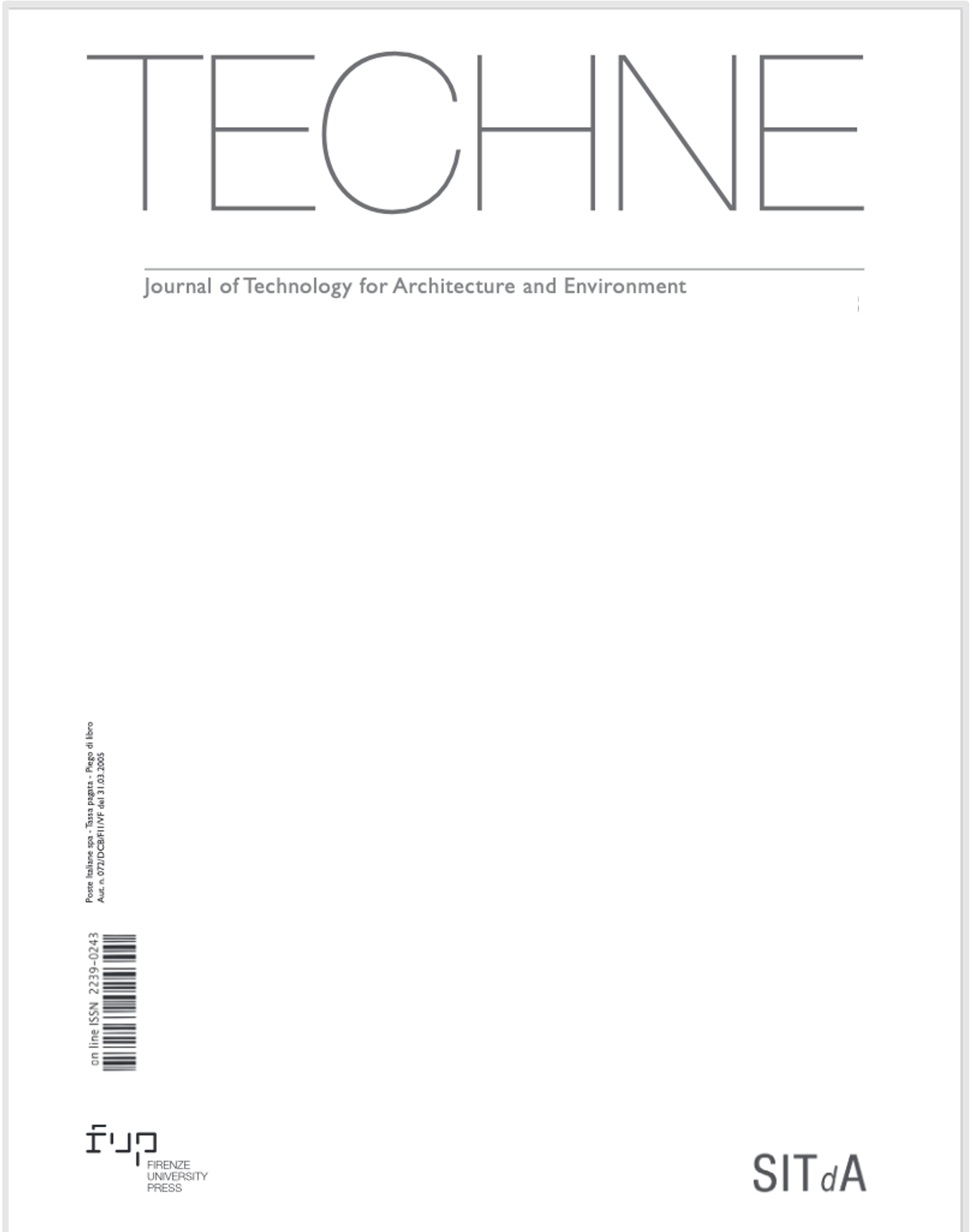CALL FOR PAPERS | TECHNE | 22
Abstract submission: December, 13th 2020
Paper submission: March, 7th 2021
DOWNLOAD CALL FOR PAPERS (PDF ITA) (PDF ENG)
The notion of Transition – industrial, economic, ecological – has been in the last decade one of the responses to the need to rethink unsustainable productive structures for resource and energy consumption, waste production, emissions of climate-changing gases.
K.Boulding (L’economia dell’astronave, 1966), B. Commoner (The Closing circle, 1971), E.Tiezzi and N. Marchettini (Che cos’è lo sviluppo sostenibile, 1999), M. Braungart and W. McDonough (Cradle to Cradle, 2002), denouncing the limited world resources and the effects of uncontrolled waste production, and comparing natural processes to industrial processes, together with many other scientists have anticipated the cultural and socio-economic background that today directs towards the circular economy theories.
A issue developed in time and particularly supported in recent periods by the policies of push towards innovation for all production sectors:
- at european level, with the European Green Deal strategy, which aims to promote the efficient use of resources to achieve climate neutrality by 2050 (EC COM 640, EC COM 98) and guide the urban transition towards eco-districts, directing much of the EU’s research and development actions;
- at national level, with the industrial policy of Transition Plan 4.0, which provides for a stronger focus on innovation, green investment, research and development, design activities (MISE 2020).
In such a perspective, the development strategies that derive from the circular economy principles, require a rethinking also of the current statutes that oversee the architecture design in its process, realization and managing aspects, as well as formal. In its broadest sense, from product design to the scale of architecture, the design becomes a key factor to set up actions capable of respecting the three founding principles of the circular economy, as established by E. MacArthur Foundation (2013): design out waste and pollution (product innovation, Circular Design strategies, enabling technologies 4. 0, …); keep products and materials in use (process innovation, life cycle extension, remanufacturing, upcycling, …), regenerate natural systems (urban innovation, efficient use and valorization of material and immaterial resources, …).
The multi-scalar and multidisciplinary implications that derive from the application of the Circular Business Model to the building sector (Carra, Magdani 2017iii) are the premises that this issue of TECHNE makes its own to collect contributions of research and documented design experimentation, as well as essays that propose critical reflections adequately referenced (including literature reviews), useful to provide, also in relation to other scientific areas, original contributions with reference to:
- Technologies 4.0.
The relationship between circular economy and industrial technologies 4.0 allow to improve production systems and their energy efficiency, optimizing the use of resources, reducing energy consumption and waste generated in the production process. The topic, within the panorama of product innovations, includes experimental research, applications and experiences of collaboration between public and private bodies, using 4.0 technologies as a tool for knowledge and monitoring in the use of resources and products;
- Lifecycle extension.
The Remanufacturing (regeneration) industrial model, applied to the building sector, goes beyond the recycling paradigm, making products/ components recover new qualities of use and therefore further opportunities for use. The application of these principles mobilizes the emerging concepts of Circular building and Circular Technologies, which imply the adoption of design approaches and technological setups oriented to Design for Disassembly. The topic, with reference to process innovations, concerns application methodologies, case studies and theoretical approaches that identify design and construction strategies;
- New formal paradigms.
In addition to functional performance, the circular flow of matter and energy produces effects on languages, invests the expressive and perceptive connotations of artifacts, acts on their symbolic dimension, requiring the revision of some fundamental formal paradigms to make them consistent with a renewed scenario both in content and in the values conveyed by the artifacts. The topic, with reference to the repercussions on building languages, focuses on theoretical insights and design experiences that bear witness to the change taking place;
- Circular urban systems.
The Circular cities development feeds on social and technological innovation experimentation, supported by multidisciplinary visions and approaches (Innovation Hub) that promote values and circular urban systems, offering opportunities for improvement even to peripheral urban centers and peri-urban or rural contexts less favoured today. The topic, in the context of Social Innovation, wants to collect experiences and innovative methodological applications with reference to the involvement of local communities (Urban policymakers) in the relationship between active regeneration and technological innovation for urban spaces.

